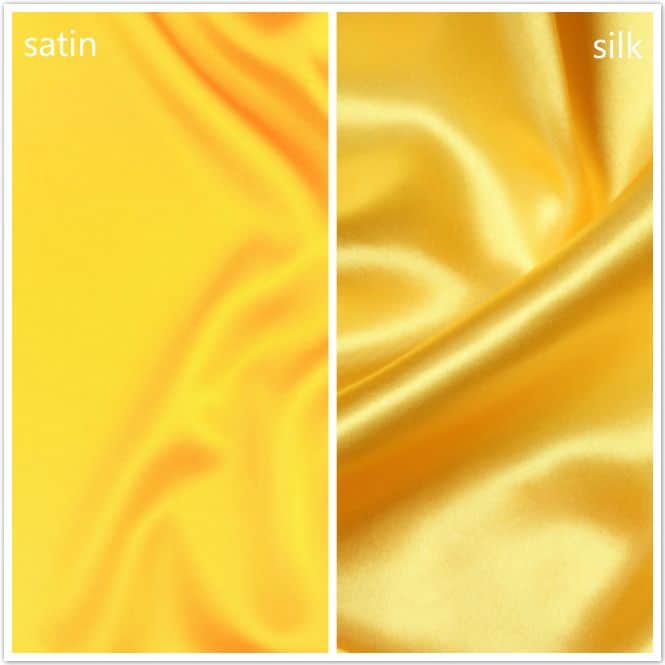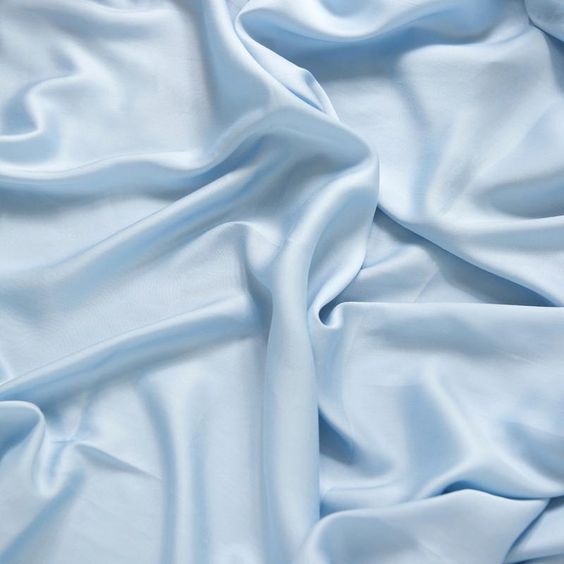Fashion rules the world, they say. Well, of course, yes but how can it rule without fabrics? Satin and Silk are some of the most popular fabrics and people use them in millions of ways when they dress.
So obviously the question must arise is silk better than satin or is it the other way around? And so, this article takes you on a journey to discover the answers to the debate of Satin vs Silk.
This article talks about the Satin vs Silk debate and tells you which is better and why. You will also find all the advantages and disadvantages of using both satin and silk in your wardrobe. So let us start the quest.
Satin vs Silk

When it comes to fabrics, woven fabrics are of great importance. There are three common and standard types of woven fabrics. They include Plain weave, Satin weave, and Twill weave. All three types have their own advantages and disadvantages.
Plain Weave fabrics are considered the most basic and effortless kind of fabrics; eg: chiffon, organdy, seersucker, flannel, etc, whereas Twill Weave fabrics are thicker and are more durable than plain weaves; eg: denim, houndstooth, etc. Satin weave fabrics like velvet satin, crepe satin, etc, are lustrous and smooth; glossy on the outside and dull on the inside.
So despite popular belief, satin is not a natural fabric but a woven fabric whereas Silk is a naturally occurring fabric. Satin is a kind of fabric that is lustrous and glossy on the front and a bit dull on the back.
Meanwhile, silk, on the other hand, is shimmering on both sides. As I said, the first and foremost difference between silk and satin is that silk is a natural fabric, woven from the cocoons of silkworms whereas satin is a synthetic material derived from the combination of Polyester, Nylon, and Silk.
Given below are some of the noticeable differences that will give you some answers related to the Satin vs silk debate.
SATIN VS SILK – MAJOR DIFFERENCES
| SATIN | SILK |
| Glossy only on the front side. The backside is somewhat dull-looking. | Shimmery look on both sides. |
| If you run your fingers over satin, you will feel slight roughness in it. (not as coarse as cotton fabric). | It is smoother and more lustrous when compared to satin. |
| Even though it is rough, satin is more delicate than silk and so should be taken care of while handling. | Silk is more durable than satin. |
| You can feel that satin is much giving while pulling out. | While pulling out silk, you will not be able to feel much give. |
| It costs less when compared to silk fabric. | Even though both are luxurious to almost a considerable amount, silk fabric is more expensive than satin fabric. |
| It has less durability so it is safe to dry-clean them. | Due to its durability, it can be washed using cold water. |
| Less breathable fabric | More breathable fabric than satin |
Satin over Silk

- It can provide you with the effects as desirable as silk fabric, that too with less money requirement.
- It doesn’t require much effort while cleaning when compared to silk.
- It is softer than the silk from the outside. Let’s say that it is twice as cushy as silk. So, it feels great on the skin. It is less expensive when compared to silk.
Silk over Satin

- Silk fabric has more durability.
- Silk clothes, pillowcases, bedspreads, etc, have hypoallergenic properties.
- Satin is a synthetic fabric. So, silk is a better option if you prefer a natural one.
- Silk fabric is considered more breathable than satin.
Lesser-Known Differences Between Satin Vs Silk
You already know that silk shines when under light and that it is made from natural protein but what you might not know is that it is very hard to produce and the reason is that it is made from tons of worms i.e. the silkworms. It is the reason why silk is so expensive.
Whereas Satin is made artificially by a mixture of different things like nylon, polyester, etc. Satin is more delicate than silk and also needs more attention while handling it because you aren’t careful while washing it and end up washing it with hot water then it can shrink from 10 to 20%.
To get the best out of your fabric every time you wash it, you should dry-clean Satin and only wash silk with cold water. Dry-cleaning satin will also be a bit expensive but if you have a liking for the finer things in life, you shouldn’t worry about that.
Alternatives

This satin vs silk controversy can go on forever. But if you are on the lookout for some alternatives to Satin and silk for reasons like money or the fabric’s feel then you can use some other fabrics like bamboo lyocell, cupro, orange fiber silk, etc.
The advantage to using these fabrics is that bamboo lyocell is derived from bamboo so it is a very eco-friendly option along with cupro because cupro is biodegradable. Orange fiber silk might not be as eco-friendly but it certainly is light-weight than silk or satin.
The Bottom Line | Satin vs Silk
From the debate of satin vs silk, it is clear that both are almost equally competitive. However, the satin fabric tends to provide extra protection, as it is softer and lustrous than silk. We can even say that they are silkier than silk.
Satin is cost-effective and easily washable too. It is easily available as well as super lustrous. Stiller, there is no harm in choosing silk too. So, the bottom line is that both come with their own pros and cons.
If you prefer comfort over anything, then the satin fabric is the go. Meanwhile, if durability is what matters to you the most, silk is more effective. However, look-wise, both satin and silk are proven equally satisfying.
Hope you enjoyed reading this article about Satin vs silk. Feel free to share your views about the two fabrics in the comment section below. Also, tell us what you prefer – Satin vs silk and tell us why?

